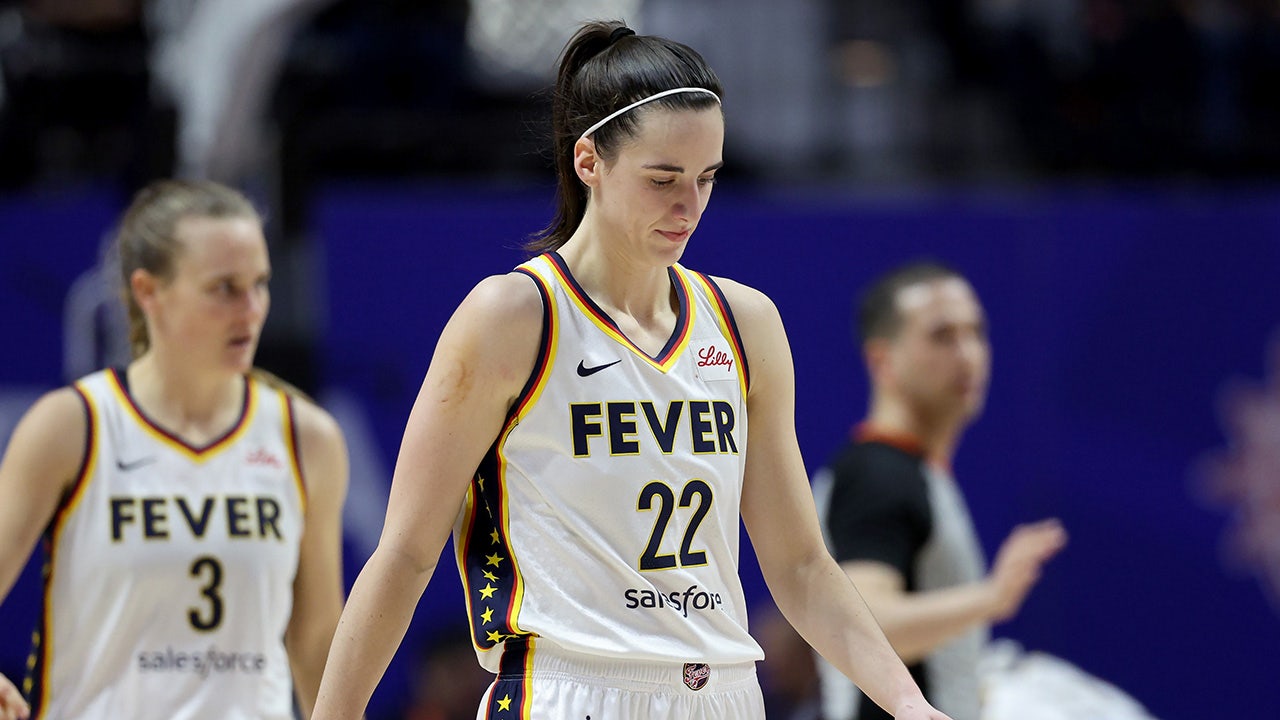Movie Reviews
Fallen Leaves review: A compassionate depiction of the proletarian life
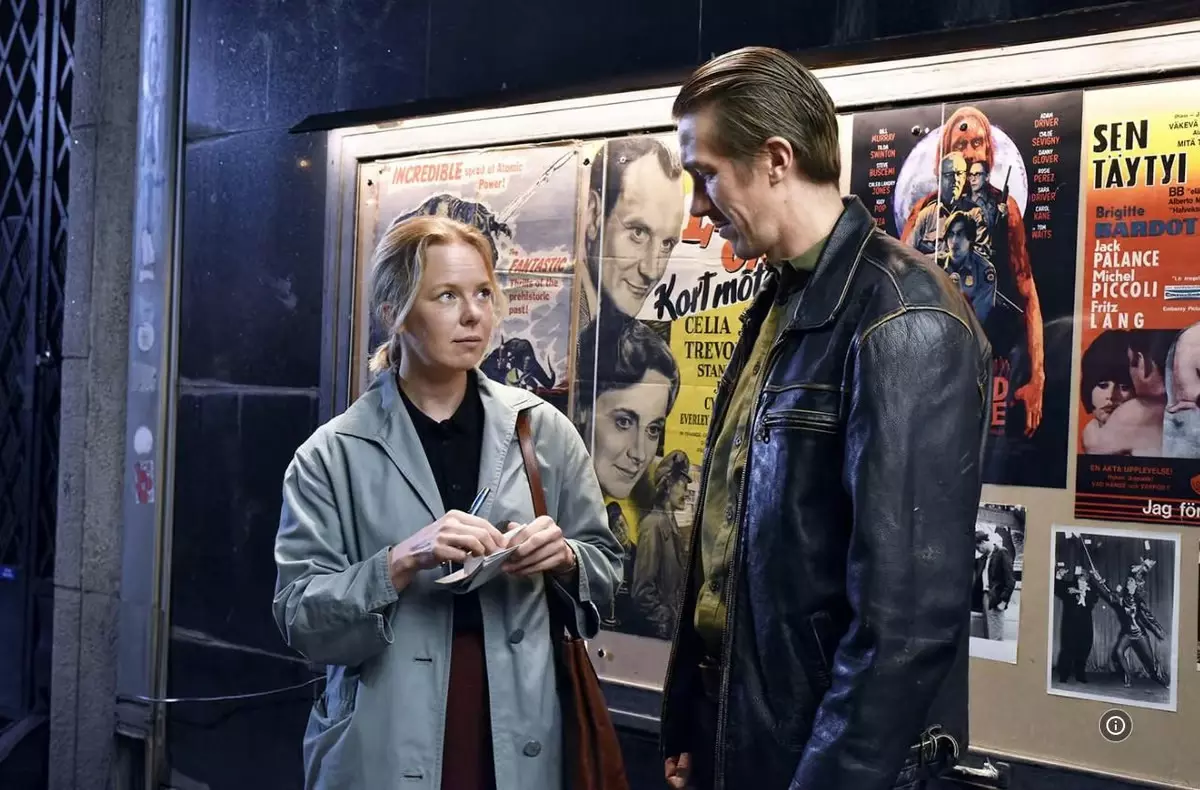
Filmmakers being in conversation with each other’s works is natural, desirable and often, a lot of fun to watch. However, like any other literary/artistic device it runs the risk of rampant, commercialized overuse. In today’s franchise-led era it is used more often than not in service of a facile sense of continuity, of a ‘shared universe’ no matter what the artistic costs may be.
Luckily, in skilled hands, filmmakers having a sense of history still pays off handsomely — and no amount of mega-corporation productions can change that about the medium. I was reminded of this powerfully during a beautiful night-at-the-movies sequence in Finnish director Aki Kaurismaki’s latest, Fallen Leaves, now streaming in India on Mubi (and on Mubi’s channel on Amazon Prime Video). A deceptively straightforward romantic comedy involving star-crossed lovers, this is Kaurismaki’s 20th full-length feature, which won the Jury Prize last year at Cannes.
Lives under capitalism as zombie-existence
In the aforementioned movie-going sequence, our two protagonists — an alcoholic, melancholy man named Holappa (Jussi Vatanen) and an overworked, conscientious woman named Ansa (Alma Pöysti) — are at the movies. Until now we have only seen these two people suffering the ravages of contemporary capitalism.
He works a series of punishing, dead-end construction gigs while she works at a corrupt supermarket that routinely sells expired food to its customers. Finally, the two of them are given a moment of peace and levity at the movies — will they hit it off or will their baggage come in the way? (This is pretty much the entire plot of the film; Kaurismaki’s films defy conventional screenwriting expectations).
They watch The Dead Don’t Die, the 2019 absurdist zombie invasion comedy (starring Bill Murray and Adam Driver), directed by Kaurismaki’s old friend and artistic brother-in-arms, Jim Jarmusch. At the end of the film, Ansa says that she hasn’t laughed this much in ages. It’s a typically bittersweet moment from Kaurismaki, whose movies are full of mild-mannered stoics who tend to be better at endurance than they are at embracing hard-fought slivers of happiness.
Ansa’s encounter with vibrant, life-affirming colour comes in the second half, when she is wearing a lively turquoise overcoat while meeting Chaplin, a friendly, yellow-coloured dog she adopts — this is, significantly, one of the first moments we see Ansa smiling and relaxed.
The fact that she found the gory zombie invasion hilarious is part of the point — Kaurismaki and Jarmusch share a certain bleak flair for introducing absurdism into everyday situations. But what’s even more remarkable is the subtext and how well it blends in with the world these two people live in. Ansa and Holappa look at their own lives under modern-day capitalism as a kind of zombie-existence. This is signaled loud and clear throughout the film’s 80-minute runtime in a variety of ways.
Kaurismaki’s minimalist visual vocabulary
In an early scene, we see Holappa reluctantly getting ready for a night out in town — he checks out his own surly face in a shattered mirror, his reflection looking like something out of a Cubist portrait. In a later scene, Holappa is drunk and passed out on a bench at a bus stop, where a group of teenagers is rifling through his pockets, disappointed at the meagre results. Ansa quietly checks Holappa’s pulse, seats him upright on the bench so he doesn’t choke on his own vomit and then quietly leaves on the next bus.
This visual is one of the best and most poignant moments in the film — a barely-lit Ansa unsure whether to leave, looking at Holappa as the bus starts, inevitably, to move away from the scene-of-the-crime. This is the modern-day equivalent of a frequently-seen moment from films set in previous centuries; the farewell scene at the docks when one or more characters set sail for a foreign land.
In this case, of course, Ansa is going back home, which for her is every bit as ‘alien’ and unsettling, not least because she’s unsure of Holappa’s fate or indeed, whether they will meet again (by this point in the film, the two do not know each other’s names and have no way of contacting each other).
Kaurismaki’s visual style is spare and minimalist to the point of occasional stodginess when he’s not on his A-game. No such concerns for Fallen Leaves, however. This is his best film since his mid-career purple patch in the late 80s and early 90s, when he made such idiosyncratic masterpieces like Ariel (1988), Leningrad Cowboys Go America (1989) and La Vie de bohème (1992). A close reading of Fallen Leaves reveals it to be a kind of culmination of several of Kaurismaki’s pet themes from this phase in his career.
The colour of hope
The most prominent among these themes and motifs, of course, is Kaurismaki’s clear-eyed, compassionate depiction of the life of proletarian characters, in films like Shadows in Paradise (1986) and The Match Factory Girl (1990). The latter, in particular, is a kind of spiritual predecessor, almost, to Fallen Leaves. Its protagonist Iris (Kati Outinen, one of the director’s frequent collaborators) is very much in the same mould as Ansa.
Both of them are quiet, unobtrusive young women working punishing jobs in a ‘post-industrial’ landscape. Both of them have rich inner lives that they keep well-hidden from the rest of the world. Besides, Iris and Ansa both share one very important feature that the two films take pains to highlight prominently — their relationship with loud, vibrant colours that stand in sharp contrast to their otherwise drab lives dominated by shades of grey.
Fifteen minutes into The Match Factory Girl, we see Iris wearing a bright pink dress that she clearly likes. Her mother reacts with inordinate anger, telling her that she looks like a prostitute but Iris refuses to listen and goes to a nightclub wearing the dress, a signal that she will live life on her own terms.
In Fallen Leaves, Ansa’s encounter with vibrant, life-affirming colour comes in the second half, when she is wearing a similarly lively turquoise overcoat while meeting Chaplin, a friendly, yellow-coloured dog she adopts — this is, significantly, one of the first moments we see Ansa smiling and relaxed. Colour bestowed upon these grayscale lives is Kaurismaki’s way of giving these characters hope.
For Kaurismaki fans, Fallen Leaves is the logical endpoint of some key storytelling strands from his career. And for newcomers it is the perfect introduction to the pleasures of this unique artist.

Movie Reviews
Movie Review: 'Tarot' – Catholic Review
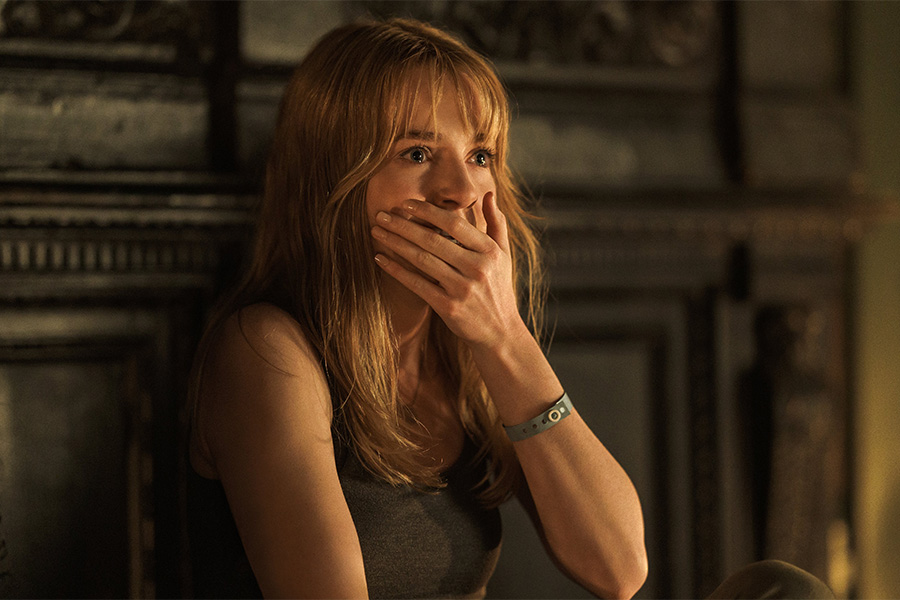
NEW YORK (OSV News) – What’s on the cards for viewers of the horror flick “Tarot” (Screen Gems)? As it turns out, not much. While the bloodletting on display in this inept production is relatively restrained, the characters are cardboard and the mythos explaining their bedevilment lame.
To celebrate a friend’s birthday, a group of college students have rented a house at which they drink the night away. Belatedly discovering that they’re out of liquor, they scour the dwelling for alcohol. In lieu of booze, they discover a wooden box containing a pack of tarot cards and, for a lark, decide to have a group reading.
This is facilitated by the fact that one of their number, Haley (Harriet Slater), is well versed in such matters. What slender strands of a background story are on offer concern the untimely death of Haley’s mother, her resulting conviction that fate is inescapable and her recent breakup with her boyfriend, Grant (Adain Bradley).
Returning to campus, the amigos gradually discover that their dabbling in divination has left them cursed. Each is haunted by the predominant figure in the hand he or she was dealt, and nasty (though mostly unseen) deaths ensue.
Among those thus targeted is good-time-Charlie Paxton (Jacob Batalon), a disheveled slacker whose skewed outlook on life is intended to provide comic relief. Third-act elucidations of the ensemble’s predicament are provided by white-haired witchy woman Alma (Olwen Fouéré).
Such is the sum and substance of co-writers and directors Spenser Cohen and Anna Halberg’s screen version of Nicholas Adams’ 1992 novel “Horoscope.” It’s an eminently forgettable experience that, while unlikely to frighten or offend grown moviegoers, will probably leave them longing for a reshuffle.
The film contains occult themes, several gory images, a fleeting reference to drug use, a couple of profanities, frequent milder oaths, at least one rough term and much crude language. The OSV News classification is A-III — adults. The Motion Picture Association rating is PG-13 — parents strongly cautioned. Some material may be inappropriate for children under 13.
Read More Movie & TV Reviews
Copyright © 2024 OSV News
Movie Reviews
Short Film Review: Heaven's Door (2021) by Kim Gyu-tae
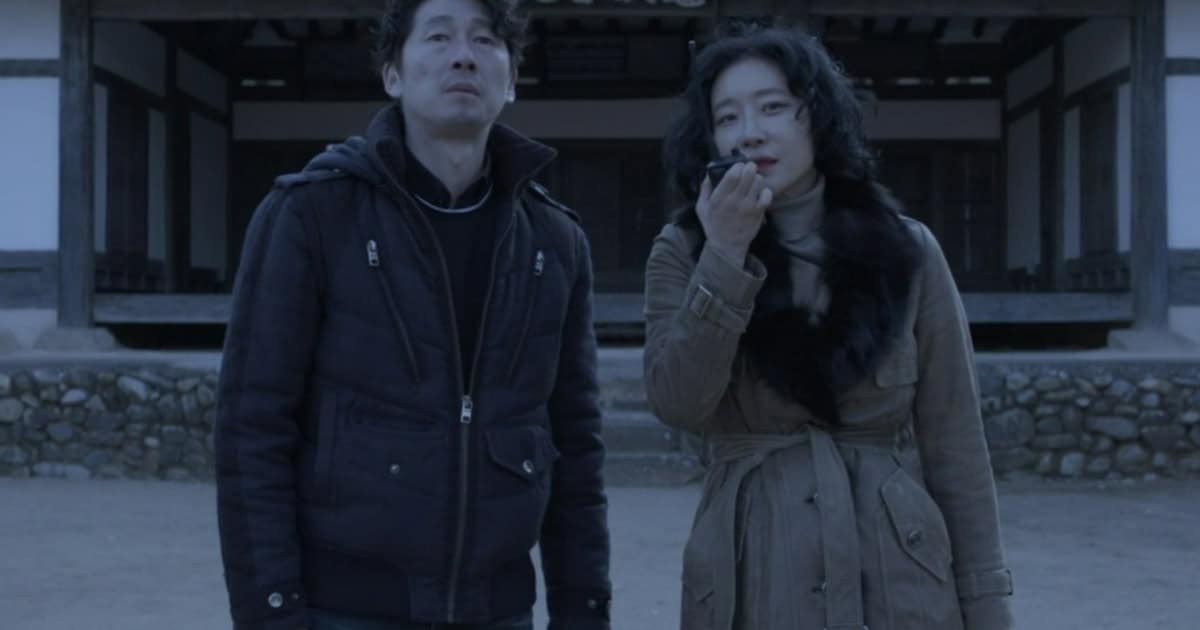
“You will be punished for your guilt”
The movie begins with a black screener, while what seems to be a newscaster is reporting a work-related accident that led to the death of two workers. It turns out that the sound is coming from the car radio of a man who is parked in an area where he is looking for a specific house he was asked for by a wealthy lady, along with another man, his assistant, Seong-tae. The area is in Daegu, within a forest and includes houses of traditional style. The two discuss various matters, from whether the boss, Yong-bae, is sick and the assistant’s knack for buying lottery tickets, when their employer appears.
She carries with her a jar sealed with what seem to be scrolls and eventually begins something that looks like an intense ritual. The weather suddenly changes, her eyes turn white, and upon the ending of the ritual, a boy appears, which the woman immediately orders to go to work. The boy opens a door which the lady states is the Door to Heaven and then disappears. She then asks from Yong-bae to go inside and check if there is white light there, offering him a huge amount of money. Yong-bae send his money-loving assistant in, for half the money. While Seong-tae is there, the woman reveals what this thing is all about. Eventually, something seems to go wrong.
Although not exactly clear, it seems there is a parallel between what is being said in the intro and what happens later with Kim Gyu-tae, which results in a comment about how the rich and higher ups exploit the workers and the poor, with promises about money, not caring whether they live or die essentially. That the higher up the chain the worse people are and vice versa is also highlighted. The concept of the title also seems to have some significance here, as the rich are portrayed to look for things like eternal life and the poor for a way to be comfortable when they grow old, with money here being what connects the two, although in opposite terms: the poor are constantly in search for it and the rich exploit the fact by offering it to achieve their goals.
This aspect, however, is very difficult to realize, particularly since the nature of the movie moves more towards a supernatural horror film than a social drama, and the comment and the metaphor that communicates it, are barely visible. On the other hand, as a genre movie, “Heaven’s Door” works quite well, creating an atmosphere of disorientation that gradually turns into terror, in the most entertaining fashion. To achieve that, the cinematography by Jang Eun-woo, the editing by Kim Gyu-tae himself and An Ho-sung’s sound come together in the most impressive way, communicating the horror and the dramatic direness of what is happening quite impactfully.
Also of note here is the acting by Song Ah-gyoung, who plays the femme fatale with gusto, emitting a sense of mystery, danger, and a tad of sensualism from every movement.
Kim Gyu-tae has some interesting ideas, like using genre filmmaking to make social comments, while he evidently knows how to create a captivating atmosphere. At the same time, however, the 28 minutes of the short are definitely not enough for his ambitious purpose, with the first past getting almost completely lost. Hopefully, if he gets the opportunity to shoot a feature in the future, he will be able to achieve his goal in much better fashion, as he seems to have the knack for it.
Movie Reviews
THE BLUE ANGELS Review
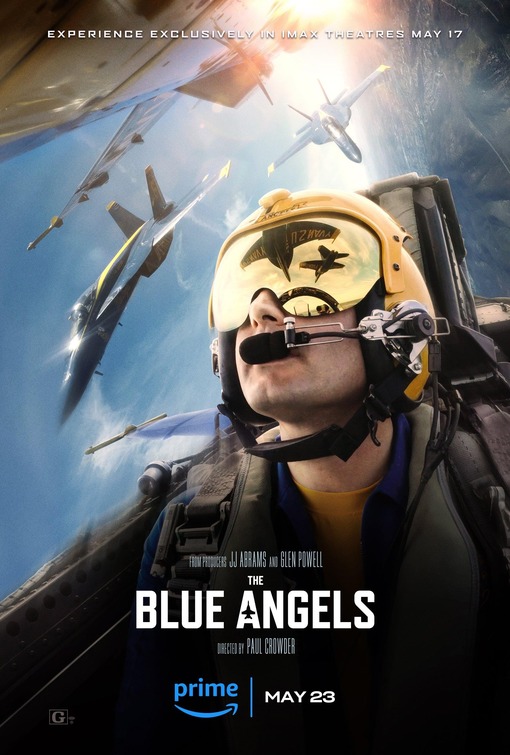
THE BLUE ANGELS is an excellent family movie. It will inspire children and adults. Except for one very light obscenity, this one of the cleanest, most wholesome movies since the Golden Age of Hollywood. It’s highly recommended by MOVIEGUIDE®.
Dominant Worldview and Other Worldview Content/Elements:
Extremely moral worldview promoting excellence, teamwork and graciousness between the superior pilots who are chosen to be part of The Blue Angels jet plane exhibition team of the United States Navy for two years, with some pro-family themes;
Foul Language:
One “a…h…” obscenity;
Violence:
No depicted violence but exciting and dangerous maneuvers at very high speeds and reports about the 28 Blue Angel pilots who died during their expositions and several pilots chosen to be Blue Angeles pass out in the G forces experienced in a centrifuge;
Sex:
No sex, but discussions of how much the pilots love their families and family reunions;
Nudity:
No nudity;
Alcohol Use:
No alcohol;
Smoking and/or Drug Use and Abuse:
No smoking or drugs; and,
Miscellaneous Immorality:
Nothing else objectionable.
THE BLUE ANGELS is a very captivating documentary on IMAX and Amazon Prime about the famous Navy exhibition team and a year in the life of a particular team as they go through training , exhibitions and then retirement from the Blue Angels. THE BLUE ANGELS is one of the most moral, uplifting and positive movies ever made.
The movie starts by telling viewers that the Navy has about 3700 combat pilots in active duty every year. Out of that, six are chosen to be members of the Blue Angels for two years. In January, the six men featured in the movie are put through intensive training for three months. Their exhibitions feature flying that is absolutely amazing for its need for precision and perfection. For instance, in the famous Navy diamond, six planes fly at over 400 mph extremely close to each other with just a few inches between their wings, so one little slipup can cause a disaster.
At El Centro, Calif., their flying involves experiencing seven Gs on a centrifuge, which forces the blood down into your feet and causes pilots to pass out. Some of them do pass out in training on the centrifuge later in the movie. Of course, you can’t mess up when you’re flying wingtip to wingtip. So, each pilot must get incredible control of their body, mentally and physically. The crew chief spends hours every day talking to them about their procedures.
After training, the pilots travel the country like a sports team or a rock band to perform 32 shows around the country. At one point during those shows, they return to Pensacola, Florida, which is the official home of the Blue Angels. There, they’re united with their wives and children. Many of their wives are also serving in the Navy. During this part of the movie, they discuss the 141 Blue Angels support people, with each pilot having his own support team.
Toward the end of their year-long exhibitions, the pilots choose the people to replace them. Choosing the boss is extremely difficult. Pilots who serve their two years on the Blue Angels, return to active service in the Navy. For the first time during this movie, the Navy appoints a woman to be a member of the Blue Angels, leaving it open ended whether she can perform under the stress to achieve perfection.
The last part of the movie shows a little bit of the history of the Blue Angels and the fact it was started by Admiral Nimitz in 1946 to show the world the Navy’s prowess in flying in planes as well as in ships. Many of the pilots testify they saw a Blue Angels exhibition when they were six and even four years old, and therefore caught the vision of becoming member of this elite team.
THE BLUE ANGELS is an excellent family movie. It will inspire children and adults. Except for one very light obscenity, this one of the cleanest, most wholesome movies since the Golden Age of Hollywood. It’s highly recommended by MOVIEGUIDE®.
4000+ Faith Based Articles and Movie Reviews – Will you Support Us?
Our small team works tirelessly to provide resources to protect families from harmful media, reviewing 415 movies/shows and writing 3,626 uplifting articles this year. We believe that the gospel can transform entertainment. That’s why we emphasize positive and faith-filled articles and entertainment news, and release hundreds of Christian movie reviews to the public, for free. No paywalls, just trusted, biblically sound content to bless you and your family. Online, Movieguide is the closest thing to a biblical entertainment expert at your fingertips. As a reader-funded operation, we welcome any and all contributions – so if you can, please give something. It won’t take more than 52 seconds (we timed it for you). Thank you.
4000+ Faith Based Articles and Movie Reviews – Will you Support Us?
Our small team works tirelessly to provide resources to protect families from harmful media, reviewing 415 movies/shows and writing 3,626 uplifting articles this year. We believe that the gospel can transform entertainment. That’s why we emphasize positive and faith-filled articles and entertainment news, and release hundreds of Christian movie reviews to the public, for free. No paywalls, just trusted, biblically sound content to bless you and your family. Online, Movieguide is the closest thing to a biblical entertainment expert at your fingertips. As a reader-funded operation, we welcome any and all contributions – so if you can, please give something. It won’t take more than 52 seconds (we timed it for you). Thank you.

-

 Politics1 week ago
Politics1 week agoHouse Dems seeking re-election seemingly reverse course, call on Biden to 'bring order to the southern border'
-

 World1 week ago
World1 week agoStand-in Jose Raul Mulino wins Panama presidential race
-

 News1 week ago
News1 week agoCompass Direct LLC’s 2024 Registration in North Carolina
-

 World1 week ago
World1 week agoTech compliance reports, Newsletter
-

 News1 week ago
News1 week agoColumbia University cancels its main commencement ceremony after weeks of turmoil
-

 News1 week ago
News1 week agoMan, 75, confesses to killing wife in hospital because he couldn’t afford her care, court documents say
-
News1 week ago
UCLA to resume in-person classes after Gaza protest crackdown
-

 World1 week ago
World1 week agoPentagon chief confirms US pause on weapons shipment to Israel






